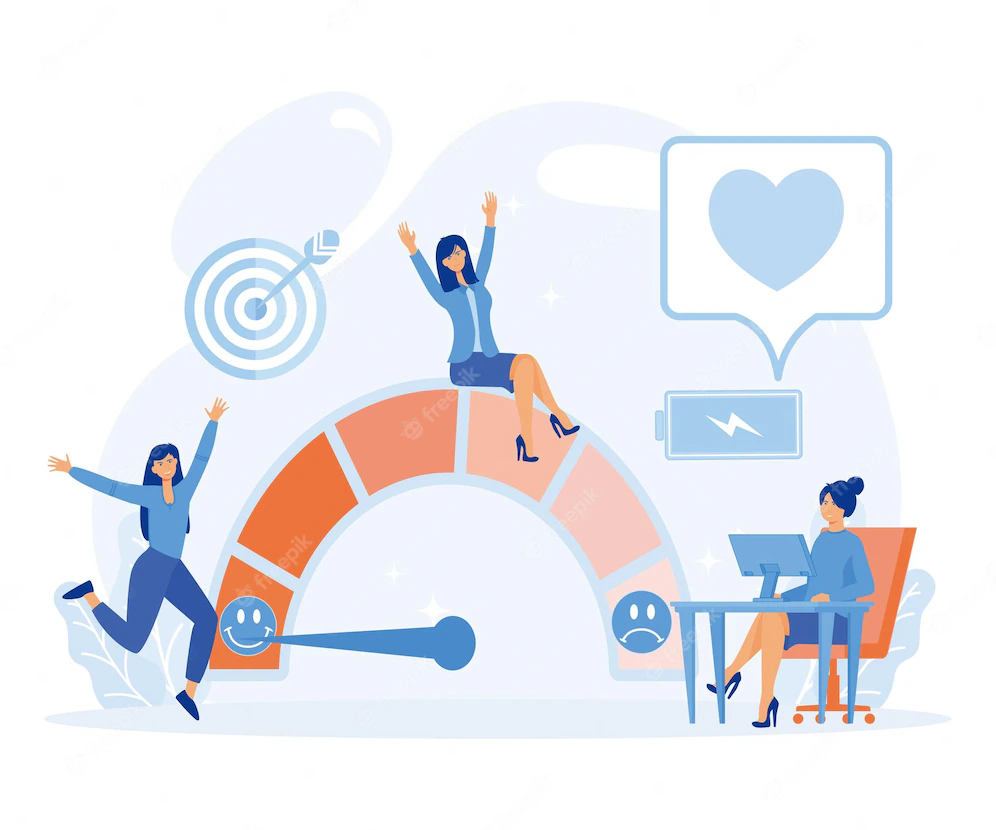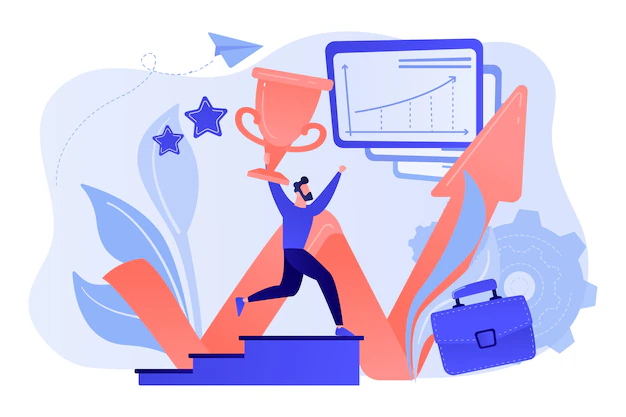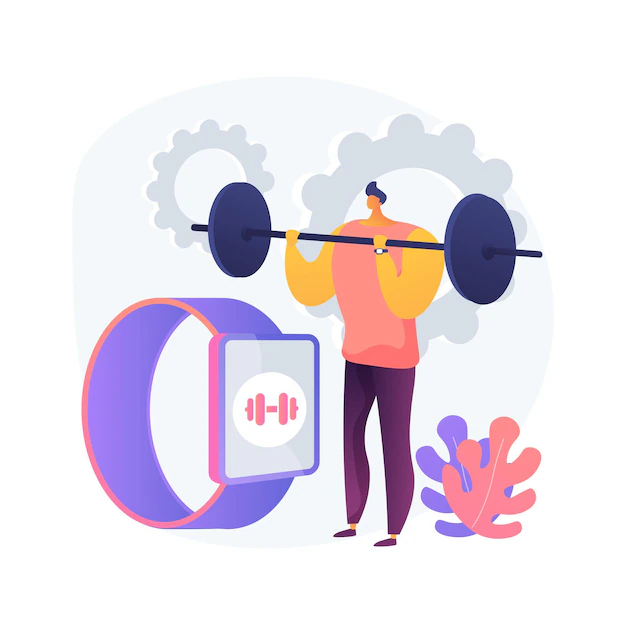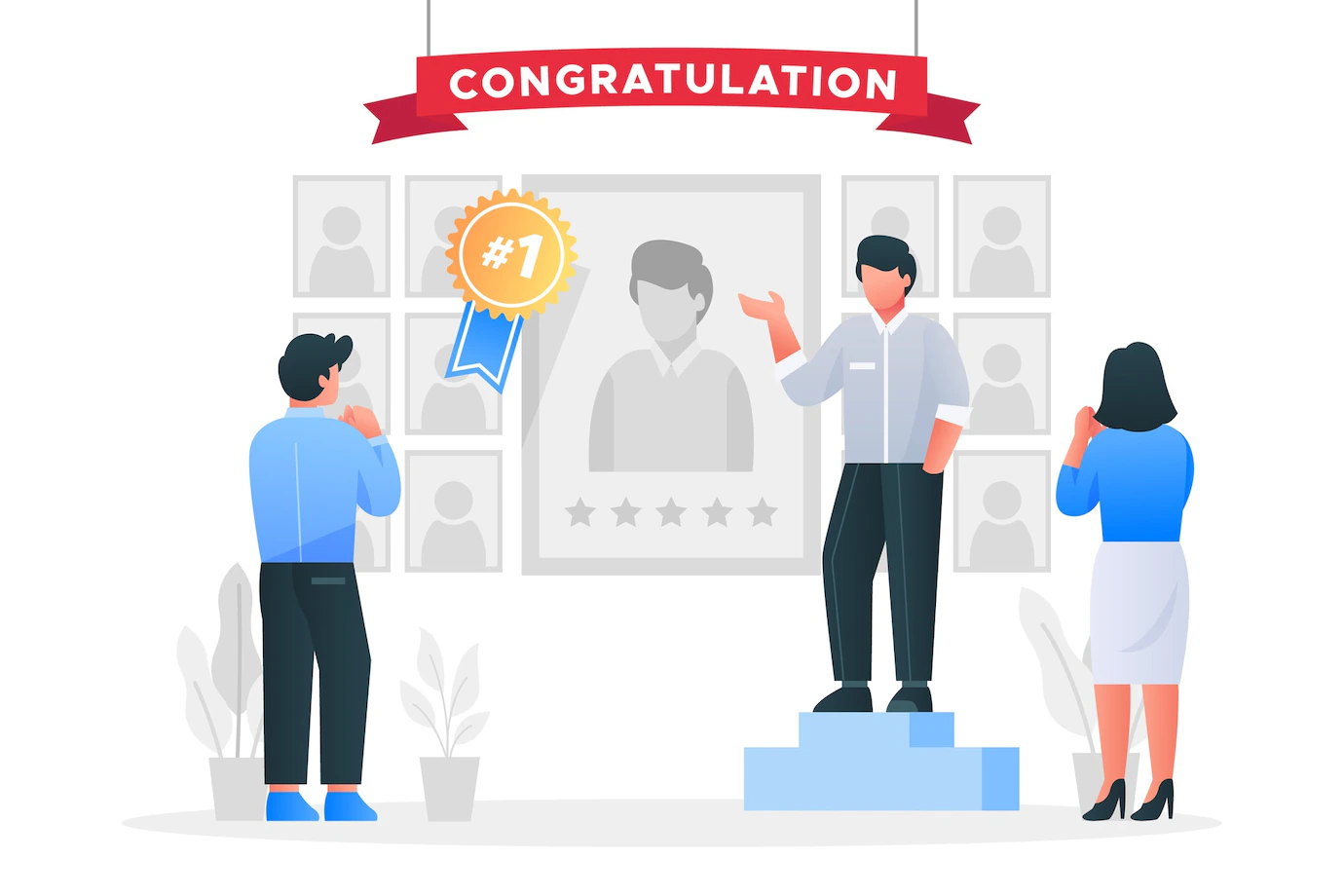21 Perfect Non-Monetary Incentives To Reward Your Employees


by S. Losina
October 16, 2023
Motivating and engaging employees is a top priority for companies in today’s competitive business landscape. While monetary rewards have long been the go-to strategy, it’s time to discover the untapped potential of non-monetary incentives. These employee incentives, not directly tied to money, have the ability to inspire employees, foster a positive work culture, and drive company success.
In this blog post, we will explore the benefits of non-monetary incentives and discover how they can transform the workplace, leading to higher job satisfaction, improved retention rates, and enhanced performance. We’ll also explore 21 non-monetary incentives designed to recognize and reward your employees.
Join us as we unlock the power of non-monetary incentives and learn how to create an environment that nurtures employee motivation and growth.????
Jump to section
What Are Non-Monetary Incentives?
Non-monetary incentives are rewards and benefits that are not directly related to financial compensation. These incentives are designed to motivate and engage employees by appealing to their intrinsic desires, personal growth, and job satisfaction, including career growth. Unlike monetary incentives, which involve bonuses or salary increases, non-monetary incentives focus on creating a positive work environment and offering perks that contribute to employee well-being and happiness. Examples of non-monetary incentives include flexible work arrangements, career development opportunities, recognition and praise, employee perks and benefits, team-building activities, and meaningful work assignments. These incentives aim to inspire employees, build camaraderie, and create a workplace culture that promotes productivity, loyalty, and overall success.
Using non-financial rewards to motivate employees can lead to a 55% increase in engagement and improve the overall employee experience.
McKinsey
Monetary vs non-monetary incentives
Monetary incentives and non-monetary incentives differ in their nature, as well as their impact on employees. Here are the key differences between the two;
- Nature: Monetary incentives are directly linked to financial compensation, such as bonuses, salary increases, or cash rewards. Non-monetary incentives, on the other hand, encompass rewards and benefits that are not tied to money but focus on other motivators, such as personal growth, recognition, and job satisfaction.
- Tangibility: Monetary incentives are tangible and can be measured in terms of monetary value. Employees can easily quantify and compare the monetary rewards they receive. Non-monetary incentives, however, are often intangible and subjective in nature. They may not have a fixed value or be easily measured in monetary terms.
- Motivation Factors: Monetary incentives primarily appeal to extrinsic motivation, meaning they encourage employees to work for external rewards like money. Non-monetary incentives, in contrast, appeal to intrinsic motivation, which involves the fulfillment of psychological needs, personal growth, and a sense of purpose.
- Longevity of Impact: Monetary incentives may have a short-term impact on employee motivation and performance. Once the monetary reward is received, its effects may fade over time. Non-monetary incentives tend to have a more lasting impact, as they address deeper psychological and emotional needs, contributing to long-term employee satisfaction and engagement.
- Cost Implications: Monetary incentives can have direct cost implications for companies, as they involve financial expenditures. Non-monetary incentives can still incur costs, such as creating recognition programs or providing training opportunities, but they may be more cost-effective in the long run compared to ongoing financial rewards.
- Perceived Value: Monetary incentives are often universally valued, as money has a tangible and transferable worth. Non-monetary incentives, however, can be tailored to individual preferences, allowing companies to provide more personalized and meaningful rewards that cater to employees’ specific needs and interests.
It’s important for companies to strike a balance between monetary and non-monetary incentives, as both have their unique benefits and considerations.
Related: 23 Fun Office Games That Bring Joy to the Workplace
Benefits of Non-Monetary Incentives
Non-monetary incentives offer several benefits in the workplace that go beyond traditional monetary rewards. Here are some key advantages of implementing non-monetary incentives;
- Increased Employee Motivation and Satisfaction: Non-monetary incentives tap into employees’ intrinsic motivation by fulfilling their psychological needs. By providing opportunities for personal growth, recognition, and a positive work environment, these incentives can inspire employees to be more engaged and committed to their work.
- Enhanced Work Culture and Team Dynamics: Non-monetary incentives, such as team-building activities or recognition programs, foster a sense of teamwork and collaboration. They promote a positive work culture, improve communication among team members, and strengthen relationships, ultimately leading to higher employee satisfaction and stronger teams.
- Improved Employee Retention and Reduced Turnover: Non-monetary incentives play a crucial role in employee retention. When employees feel valued, appreciated, and supported in their growth and development, they are more likely to stay with the company for the long term. This reduces turnover rates, saves on hiring and training costs, and helps maintain a stable workforce.
- Increased Employee Productivity and Performance: Non-monetary incentives have been shown to enhance employee productivity and performance. When employees are motivated, recognized for their contributions, and given opportunities to develop their skills, they are more likely to go the extra mile, resulting in higher levels of productivity and overall business success.
Overall, non-monetary incentives can have a transformative impact on the workplace, positively influencing employee morale, motivation, and job satisfaction. By incorporating these incentives into your rewards and recognition programs, you can create a more engaged and productive workforce.
Related: 25 Employee Awards and Incentives To Motivate
21 Perfect Non- Monetary Incentives
Non-monetary incentives can be highly effective in motivating and engaging employees. They often focus on factors that contribute to job satisfaction, work-life balance, and personal growth. Here are 21 of the best non-monetary incentives for employees;
1. Recognition and Appreciation????

Recognition and appreciation are fundamental for keeping employees motivated and engaged. It’s about showing gratitude and acknowledging the hard work and contributions of your team. This can be as simple as regularly saying “thank you” for a job well done or recognizing outstanding performance during team meetings. More formal recognition can include awards or certificates. When employees feel appreciated and valued, their morale is boosted, and they are more likely to be motivated and committed to their work.
2. Flexible Work Arrangements
Offering flexible work arrangements is a powerful way to help employees balance their professional and personal lives. This might involve flexible work hours, remote work options, or compressed work weeks. Employees have different needs and preferences when it comes to work schedules. By giving them the flexibility to choose what works best for them, you empower them to achieve a better work-life balance, reduce stress, and improve job satisfaction.
3. Professional Development
Professional development is about investing in your employees’ growth and skills. It includes providing opportunities for workshops, courses, mentorship programs, and resources that help them improve their abilities and advance in their careers. When employees see that their organization is committed to helping them become better at what they do, it not only enhances their skills but also keeps them engaged, motivated, and more likely to stay with the company.
4. Challenging Projects????
Assigning employees to projects that are both interesting and challenging can be a major motivator. When work is stimulating and a bit difficult, it keeps employees engaged and passionate. It also gives them a sense of purpose and accomplishment, which leads to increased job satisfaction and a stronger drive to excel.
5. Clear Career Path

A clear career path involves showing employees where they can go within the organization. This could mean offering opportunities for promotions, introducing new roles, or providing support for skill development. When employees have a roadmap for their career progression and receive regular feedback and performance evaluations, it provides them with a sense of direction and motivation to work towards their goals.
6. Work-Life Balance Initiatives
Work-life balance initiatives are crucial for maintaining a healthy and productive workforce. This involves supporting programs like extra paid time off, sabbaticals, and family-friendly policies that help employees maintain a healthier balance between their work and personal lives. When employees feel that their organization cares about their well-being, it leads to higher job satisfaction and a more positive work environment.
7. Wellness Programs

Wellness programs focus on supporting employees’ health and well-being. These programs can include access to gym memberships, yoga classes, stress management resources, and mental health support. By promoting a culture of well-being and self-care, organizations help employees lead healthier lives, reduce stress, and enhance overall performance and job satisfaction.
8. Casual Dress Code or Dress-Down Days
Introducing a casual dress code or dedicated dress-down days in the workplace can create a more relaxed and comfortable atmosphere. This helps employees feel at ease and reduces the formality associated with traditional dress codes. When employees can dress comfortably, they are more likely to feel relaxed, confident, and at home in the work environment, contributing to a positive and productive workplace.
9. Employee Engagement Activities

Team-building activities, outings, and social events are a way to strengthen the bond among employees. These activities offer opportunities for employees to socialize and build connections outside of their regular work tasks. When employees enjoy each other’s company and feel like they are part of a close-knit team, it fosters a sense of belonging and camaraderie, leading to better teamwork and collaboration in the workplace.
10. Employee Empowerment
Empowering employees means giving them more autonomy and decision-making authority in their roles. When employees have the freedom to make decisions and take ownership of their work, it leads to a greater sense of value and motivation. They become more accountable and engaged, which often results in higher job satisfaction and innovation in the workplace.
11. Flexible PTO Policies
Offering flexible paid time off (PTO) policies can significantly improve employees’ work-life balance. These policies should be generous, allowing employees to take time off for vacations, personal days, or family needs without undue stress or concern. When employees have the opportunity to relax, recharge, and manage their personal lives, they return to work with renewed energy and commitment.
12. Health and Wellness Benefits

Providing comprehensive health and wellness benefits, including health insurance, dental and vision coverage, and other health-related perks, demonstrates a commitment to employees’ well-being. When employees have access to these benefits, they feel more secure about their health and financial stability. This, in turn, leads to increased loyalty, job satisfaction, and peace of mind, allowing them to focus on their work more effectively.
13. Office Perks
Office perks aim to make the workplace more enjoyable and convenient for employees. These can include amenities like free snacks, coffee, comfortable workspaces, recreational areas, and more. By offering these little extras, employees feel valued and more satisfied with their work environment. It creates a positive atmosphere that can lead to higher morale and improved productivity.
14. Opportunities for Social Impact
Encouraging employees to get involved in social and environmental initiatives is a powerful motivator. When employees can contribute to causes they care about, such as volunteering, community engagement, or sustainability efforts, it fosters a sense of purpose and a greater connection between their work and the broader world. This not only boosts job satisfaction but also enhances the company’s reputation as a socially responsible organization.
15. Regular Feedback and Communication

Effective communication in the workplace involves maintaining open and transparent channels for feedback and discussion. Regular feedback and performance evaluations help employees understand how they’re doing, where they can improve, and how their contributions are valued. When there is good communication, employees feel heard, valued, and aligned with the organization’s goals and expectations, leading to better job satisfaction and performance.
16. Personalized Rewards

Personalized incentives involve tailoring rewards to match individual preferences and interests. Offering choices such as gift cards, extra vacation days, or event tickets allows employees to select the rewards that matter most to them. This personalized approach makes employees feel recognized as unique individuals and appreciated for their contributions.
17. Workplace Flexibility
Workplace flexibility encompasses adjustments to the work environment or schedules to better meet individual needs. This might include providing ergonomic office equipment, quiet spaces for focused work, or flexibility in work hours. These considerations make the workplace more accommodating and allow employees to work in a way that suits their personal preferences and needs, ultimately contributing to their comfort, job satisfaction, and productivity.
18. Profit Sharing or Stock Options
Profit-sharing programs and stock options are non-monetary incentives that tie employees’ success to the financial health of the organization. When employees have a stake in the company’s profits or ownership through stock options, it fosters a sense of belonging and commitment to the company’s growth and success.
19. Employee Assistance Programs (EAPs)
Employee Assistance Programs provide confidential counseling, financial advice, and support services to help employees manage personal and work-related challenges. These programs demonstrate a commitment to employees’ well-being and mental health. By offering resources and assistance, employees can navigate life’s complexities with less stress and greater focus on their work, ultimately leading to improved job satisfaction and performance.
20. Learning and Innovation Time
Allocating paid work hours for employees to explore personal projects or innovative ideas that can benefit the company is a way of fostering creativity and a sense of ownership. These dedicated hours allow employees to experiment, brainstorm, and develop new solutions or concepts, contributing to innovation and continuous improvement in the organization.
21. Employee of the Month/Quarter Programs

Recognizing and rewarding outstanding employees through an Employee of the Month or Quarter program is a motivational tool. This program involves selecting exceptional employees who receive visible tokens of recognition, such as a dedicated parking spot, a special badge, or even a celebratory event in their honor. It encourages healthy competition and motivates employees to consistently excel in their work.
Implementing these 21 diverse non-monetary incentives can help create a motivated, engaged, and satisfied workforce, leading to the success and growth of your organization.
Related: Stay Connected: 17 Thoughtful Gifts For Remote Employees
Factors to Consider When Implementing Non-Monetary Incentives
Implementing non-monetary incentives effectively requires careful planning and execution. Here are some key steps to consider;
- Identify the Needs and Preferences of Your Employees: Conduct surveys, interviews, or feedback sessions to understand what motivates and engages your employees. This will help you tailor non-monetary incentives to their specific desires and interests.
- Create a Clear Communication Plan: Clearly communicate the non-monetary incentives available to employees. Use multiple channels such as emails, intranet portals, and team meetings to ensure everyone is aware of the incentives and how they can be earned.
- Set Clear Goals and Expectations: Clearly define the criteria and expectations for employees to be eligible for non-monetary incentives. This will provide clarity and ensure fairness in the incentive program.
- Measure and Evaluate Effectiveness: Continuously track and evaluate the impact of non-monetary incentives on employee satisfaction, engagement, and performance. Use survey data, performance metrics, and feedback from employees to assess the effectiveness of the incentives and make necessary adjustments.
- Celebrate and Recognize Achievements: When employees meet or exceed the goals set for earning non-monetary incentives, celebrate their achievements. Provide public recognition, send personalized thank-you notes, or organize small celebrations to show appreciation for their hard work.
- Encourage Employee Feedback and Suggestions: Regularly seek feedback from employees on the non-monetary incentives program to keep them happy and make improvements based on their suggestions. This involvement and engagement will ensure that the incentives remain relevant and effective.
- Provide Ongoing Support and Resources: Offer resources, training, or assistance to help employees take advantage of the non-monetary incentives available. This support will enable them to fully utilize the incentives and maximize their benefits.
Remember, implementing non-monetary incentives requires a proactive and ongoing effort to ensure they align with employees’ needs and contribute to a positive work environment. By following these steps, you can create a robust and effective non-monetary incentive program that motivates and engages your workforce.
Related: Why Non-Cash Rewards Are the Secret Weapon for Motivating Your Team
Conclusion
In conclusion, non-monetary incentives, including the office environment, extra leave, and professional development, offer a powerful tool for unlocking employee potential and driving company success. By providing benefits and rewards that go beyond monetary compensation, companies can create a workplace that inspires and motivates employees on a deeper level. The benefits of non-monetary incentives include increased employee motivation and satisfaction, a positive work culture and stronger team dynamics, improved employee retention and reduced turnover, and enhanced productivity and performance.
Now is the time to embrace the potential of non-monetary incentives and create a workplace that inspires your employees to reach new heights. By integrating these incentives into your reward programs, you can foster a culture of motivation, satisfaction, and long-term success. So, take action today and unlock the full potential of non-monetary incentives in your organization. Your employees and your business will reap the benefits.



Let’s have a chat
FAQ
To boost engagement in your recognition program, consider these strategies:
Meaningful Rewards: Offer tailored rewards like cash bonuses, gift cards, or experiences to match employee preferences.
Public Recognition: Celebrate participating employees publicly through emails, bulletin boards, or team meetings to foster a culture of appreciation.
Gamification: Introduce fun and competition with leaderboards, badges, and incentives for achieving milestones.
Customized Goals: Let employees set their recognition goals to increase their ownership and motivation.
Communication and Training: Clearly communicate program benefits and purpose to show how participation contributes to company success and personal growth.
Non-cash rewards bring multiple benefits to organizations. Unlike cash incentives, these rewards can profoundly impact employee motivation, engagement, and performance. Here’s how they can benefit your organization:
– Elevate Morale: Non-cash rewards tangibly acknowledge employees’ contributions, boosting morale and job satisfaction. Valued employees are more motivated and engaged.
– Drive Motivation: Non-cash rewards are potent motivators, inspiring employees to exceed expectations. Unlike cash, they’re memorable and special, creating pride and a sense of achievement.
– Fuel Healthy Competition: Trophies, certificates, and other non-cash rewards spark friendly competition. This propels productivity and efficiency as employees strive to outperform each other.
– Cultivate Positive Culture: Non-cash rewards foster positivity. Recognizing accomplishments nurtures appreciation, teamwork, and healthy competition, enhancing collaboration and satisfaction.
Yes, you can! Huuray handles orders in bulk, so you can send gift cards to as many recipients as you need. Offer a personalized experience with your organization’s logo, customized fonts, colors, and message.